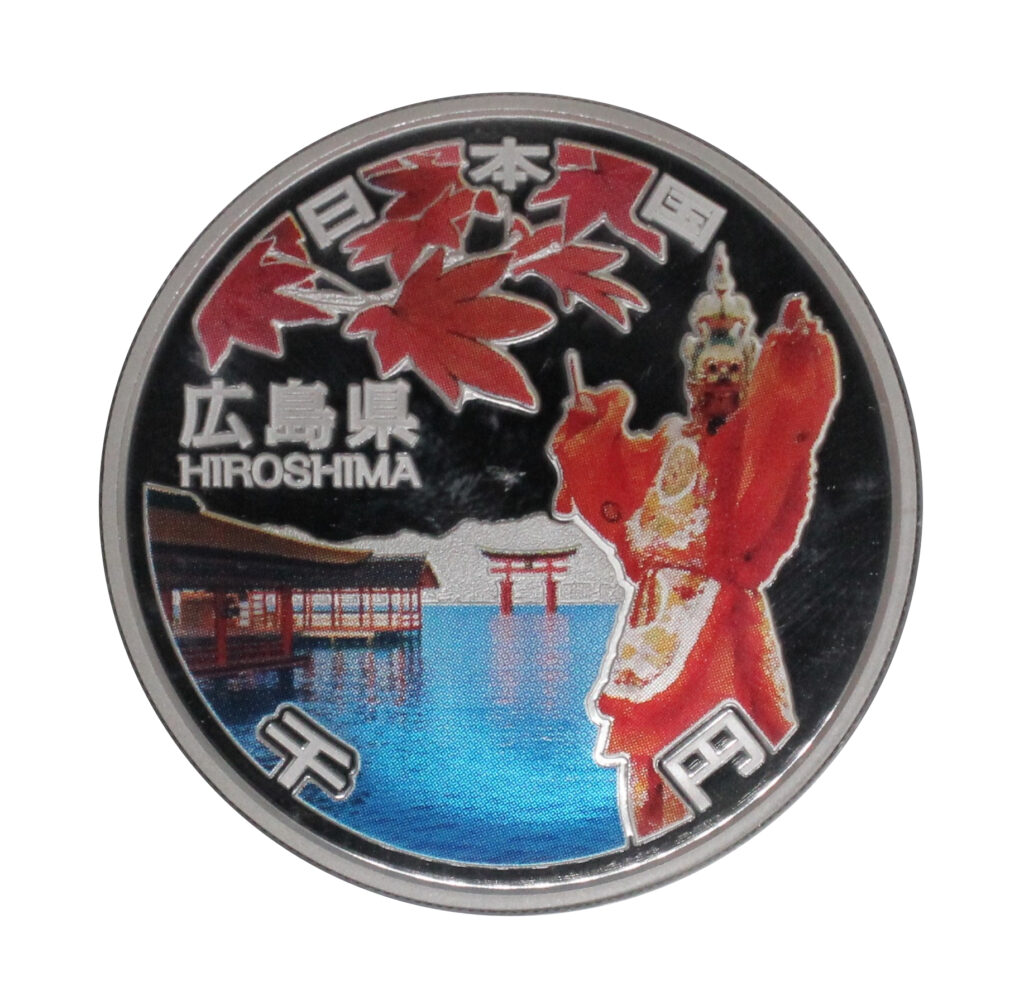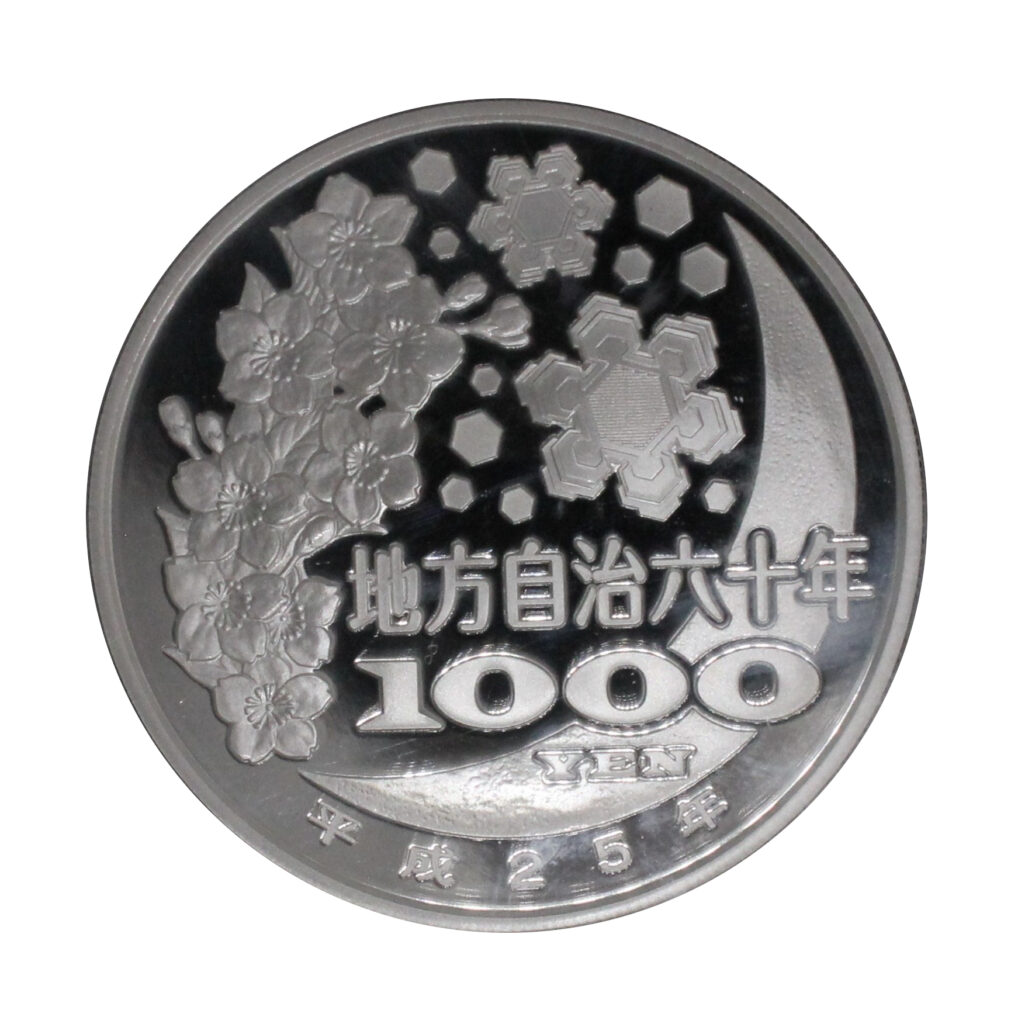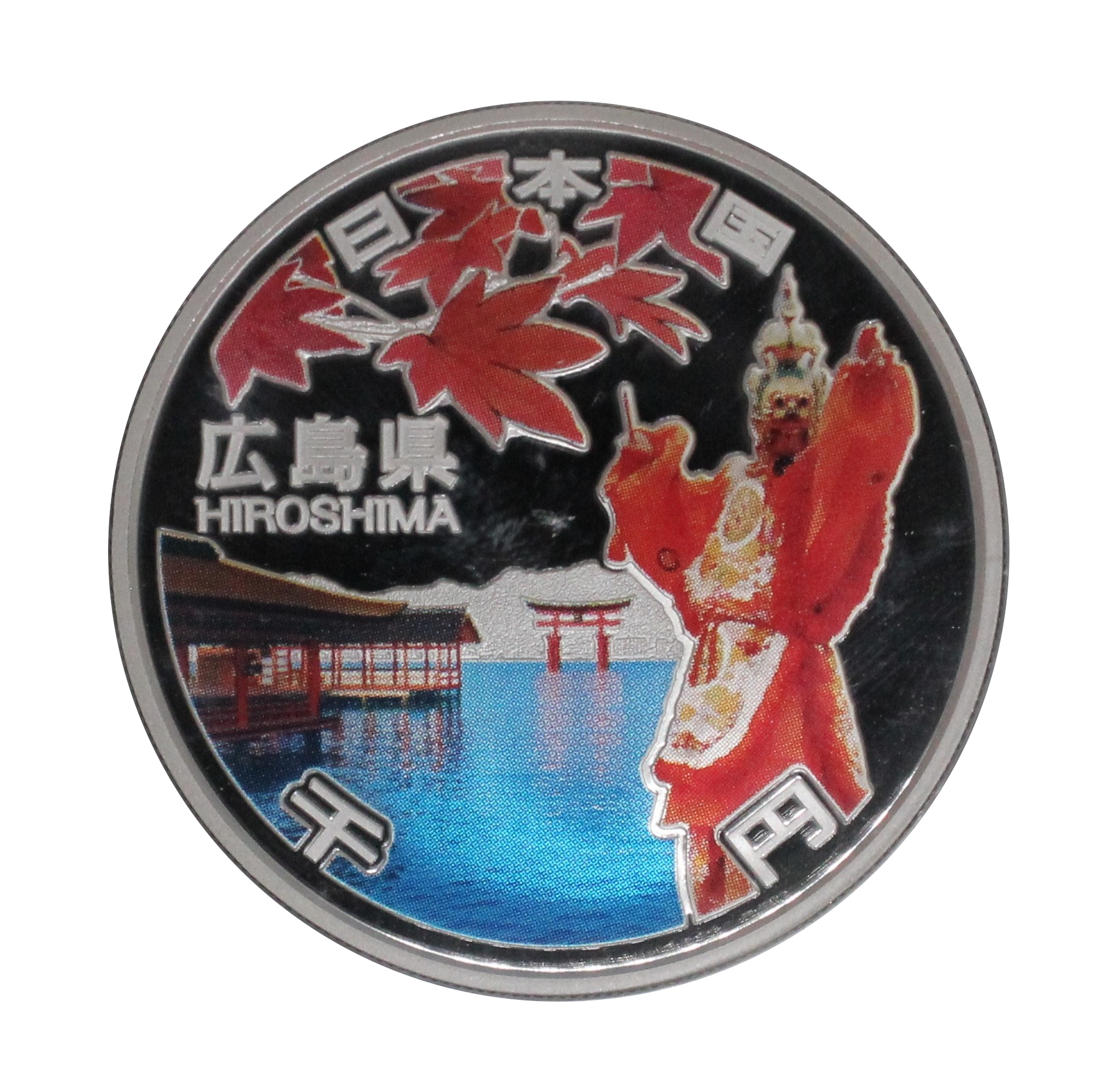JNDA# 07-27


| Material | Silver |
| Composition | Pure Silver |
| Weight | 31.1grams=1.09oz |
| Diameter | 40mm=1.57in |
| Year of Production | 2013(Heisei 25 year) |
These silver coins were issued to commemorate the enforcement of Japan’s Local Autonomy Law.
Each of the 47 prefectures has its own unique design.
The Hiroshima Prefecture coin depicts the World Heritage site Itsukushima Shrine, along with its sacred dance, and maple leaves.
Itsukushima Shrine
Itsukushima Shrine was founded in 593 AD. The current shrine buildings were constructed by Taira no Kiyomori in the 12th century. Set against the backdrop of the green-covered mountains centered on Mount Misen, the vermilion-lacquered shrine buildings and the large torii gate floating on the sea create a unique landscape. It was registered as a World Cultural Heritage site in December 1996.
Bugaku
Originally, this term referred to the music (Gagaku) and dance transmitted to Japan via India, China, and the Korean Peninsula. The forms originating in India, as well as those from China and the Korean Peninsula, no longer survive today. The Bugaku of Itsukushima Shrine is said to have been introduced from Shitennoji Temple in Osaka by Taira no Kiyomori in the late 12th century. It is still performed in worship ceremonies over ten times a year.
Maple Trees
Maple trees are distributed throughout Hiroshima Prefecture. Given their abundance at famous sites like Miyajima (one of Japan’s Three Scenic Views), the Special Place of Scenic Beauty Sandankyo Gorge, and the Place of Scenic Beauty Taishakukyo Gorge within the prefecture, the maple was designated as the Prefectural Tree of Hiroshima Prefecture on September 1, 1966 (Showa 41).

